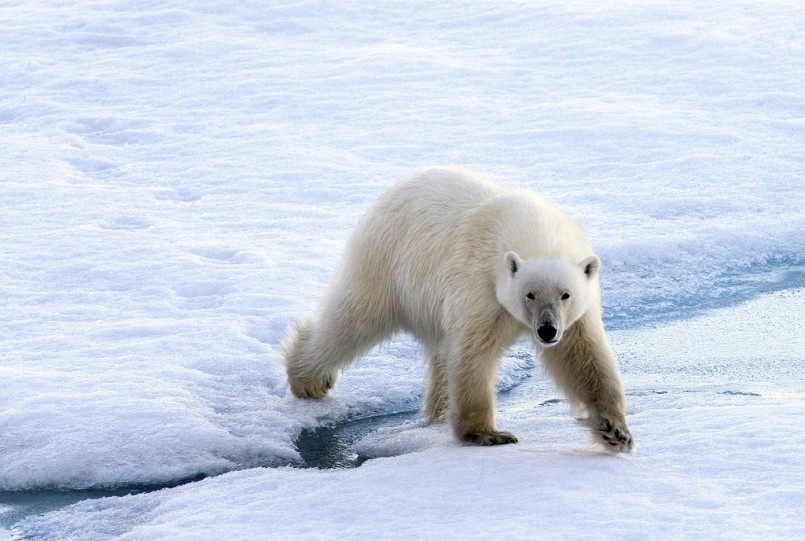Environment
Climate change will hurt these animals the most
The climate around our world is changing. Cooler places are heating up, and warm areas are becoming hotter. As humans, we can move to new locations, or simply turn up the air conditioning when we have a problem with it. Our lives are mildly affected, but we continue our day to day activities and don’t pay much mind. Animals, on the other hand, are physically incapable of ignoring the climate change. They’re forced to migrate to colder areas, the poles, for example, or upward (climbing a mountain, etc). Marine animals must swim deeper to find cold waters. The weather also changes the seasons—spring comes sooner, which inhibits animals’ patterns of migration, breeding and building their homes. Their very habitats are reforming, and some are becoming obsolete altogether. Believers in evolution say that animals can adapt in time, but the fact is the climate is changing too quickly for the creatures to catch up. And there’s nothing the animals can do to stop it.
Some species are affected more than others. Climate change will hurt these animals the most:
- Polar bears: These mammals depend on ice. They live on it, use it as a platform to stalk prey, and protect themselves from harsh winds with it. Unless the global warming slows, the ice could melt all together and the polar bear would lose its habitat, making it impossible for it to survive. Scientists theorize that the Arctic Sea’s ice is melting at 9% per decade, faster than it has previously. Less ice means more open waters, so polar bears have to swim farther to find food and shelter.
- Orange-spotted filefish: This fish lives in the Coral Reef, which is deteriorating due to the climate change. With its home being destroyed, the species of fish faces a greater risk of extinction. Further, this fish is unable to live in warm water. According to National Geographic, the filefish became extinct in Japan in 1988, when the water grew too warm.
- Penguins: Penguins are another sea creature dependent on ice for survival, so they face some of the same challenges as the polar bears. Specifically, the Adelie penguins are affected. This penguin eats krill, which lives on the underside of ice. When the ice melts, the population of krill decreases, therefore penguins have to go farther to find food. This extension of searching hinders the Adelie penguins’ mating and migrating habits.
- Sea turtles: In South America, for example, sea turtles swim to shore to nest their eggs. The eggs must be buried in the sand, and the sand must be a certain temperature for the offspring to survive. Climate change is causing erosion on the beaches, and the waters are rising too high to nest eggs safely. Also, the temperature of the sand determines the sex of the offspring: colder sand produces male turtles. With the warming of the sand, the population of male turtles is decreasing and inhibiting the breeding process. Thus far, six breeds of turtles are endangered: green turtles, hawksbills, loggerheads, Kemp’s ridleys, Olive ridleys, and leatherbacks.
- North Atlantic Right Whale: This specific whale is one of the most endangered of the whales. The whales require zooplankton to feed on, and in large quantities, as whales are big creatures and travel in groups. The warming water is decreasing the availability of zooplankton. Without it, the whales risk starving. Particularly, the female whales are in danger. If not enough food is available, they can’t bulk up to prepare for a calf, carry the calf for the full term, or produce milk to feed the calf after birth. The worst part is a right whale’s gestation period is a whole year. The lack of zooplankton is seriously affecting the whales’ ability to reproduce, and their population is dropping. Less than five hundred right whales are alive right now, and without an increased food supply, they stand little chance to repopulate their numbers.
- Giant Panda: This creature is endangered for a variety of reasons, including poaching, decrease of bamboo and a fragmented habitat. Bamboo is affected by the climate change, as it needs a cool environment to grow. A study performed by Michigan State University’s Center for Systems Integration and Sustainability (CSIS) showed that bamboo has an unusual reproductive cycle: it only reproduces every 30-35 years. This limits the growth of the bamboo, and the time it would take the plant to adapt to a new climate. As the almost sole source of food for pandas, this greatly impacts the pandas’ futures. The only hope would be to find a way to grow bamboo in a warmer climate, or move the plants to higher, colder ground. Either option means moving the pandas to a new habitat, as well.
- Orangutan: These apes live in the rainforests of Indonesia. The forests are logged by the locals, which confines their habitat to smaller sections than they once were. Here, they feed on fruits. Due to the climate change, it rains less often, and the fruits don’t grow as bountifully as they should. The dry rainforests also increase the risk for wildfires and droughts, which destroy the orangutan’s already-compact habitat. Without enough food or space, there is a lesser chance for population growth.
- Frogs: Frogs rely on water to breed: eggs are laid in breeding pools, where they develop into tadpoles, and then into frogs. Climate change means less rain, which is less water to gather in pools, and therefore the decrease in frog population. Also, frogs thrive on moisture because of their permeable skin. Without enough water to replenish their internal supply, adult frogs are dying. This lack of water is affecting the frogs’ habitat and causes them to move from places they have long inhabited.
The sooner action is taken, the better the chances are for all of these species and their survival. You may not be a scientist, but you can still help in conservation efforts. Donate to a conservation organization in your area. Volunteer. Switch to more energy efficient sources of power, like wind or solar. Cut back on your pollution contribution (like driving a car, etc). Recycle. Take a stand for these beautiful animals.






0 comments